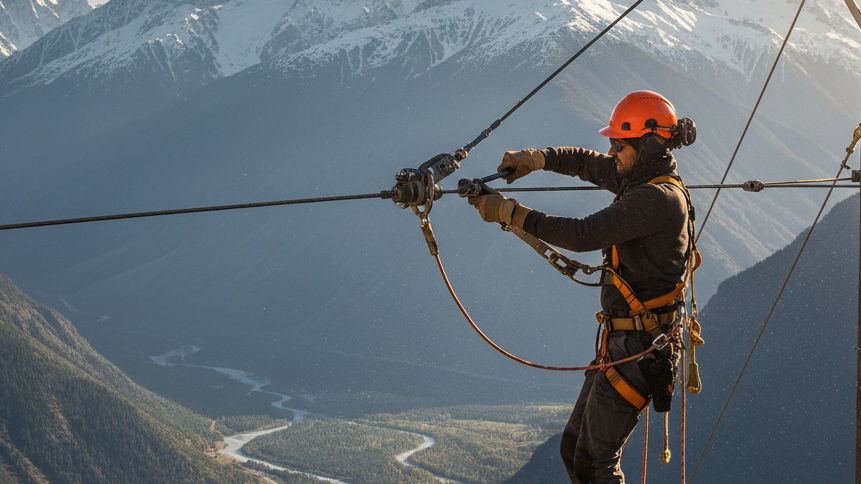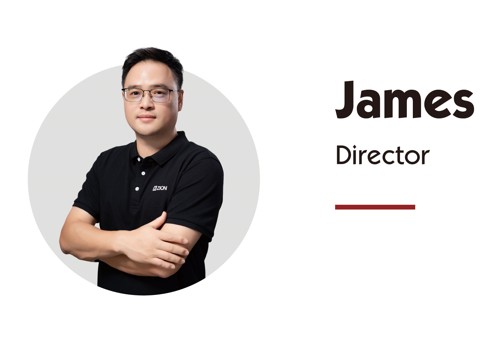Cable & Wire | High quality and excellent service at reasonable prices.
info@zion-communication.com
Author: James Publish Time: 09-10-2025 Origin: Site
The field data provided by three North American utilities indicate the same trend, which reveals in 15–18 years the occurrence of fiber-events as well as after 22–25 years the rapidly increasing rate of failure. The cables do not rupture, but the optic margin disappears. Underlying the 25 years or even 40 years of design are budget issues.
Triple combination of UV and water. The thickness of the outer poly(ethylene) jacket is only 0.8 mm. When the carbon-black is leached out, the time that cracks reach the strength yarns is between 3 and 5 years.
Type of Dry-band arcing. On the 110 kV, a 15 kV can build from 0.5 m of wet sheath. Arc temperature of more than 1000 °C can melt the PE and the 1-hour cuts the mechanical strength of the composites.
Bending due to wind. The amplitude of the 0.3 % fibre strain is caused by the aeolian vibration of the 10–40 Hz. The fatigue limit for the silicate is reached only after 200 million cycles, which takes approximately 7 years on a coastal spine.
IEC 60794-1-21: the limit of optic fibre strain 0.6 % for 25 years.
IEEE 1222: during 1000 h, 67 kV are used for tracking resistance.
EN 50305: UV aging, 720 h at 0.5 W/m², and the change should be less than 20 %.
Make sure that you request the entire test report, and not just the certificate, from the supplier. In the past, we have noticed that some laboratory tests only had "pass" certificates, but they did not actually test the actual jacket compound.
Jacket: - high-density PE, - 2.2 % carbon black, - UV-B stable, - MFI ≤ 0.3 g/10 min.
Strength yarns: fibre-glass reinforced polymer (FRP) - 1 200 MPa - 1.5 % elongation, - without splices throughout the 4 km drum.
Fibre: ITU-T G.652.D - 0.35 dB/km @ 1310 nm, - 0.21 dB/km @ 1550 nm, - proof-test 1 %.
Attenuation margin: 0.05 dB/km, which is 25-year ageing.
Minimum span: just match your longest span + 10 % safety.
Maximum working tension: 45 % RTS.
Electric field: 55). If the hardness drops 10 %, set up the schedule replacement.
Year 15: to check for dry-band hot spot, use the infrared; the anti-tracking rod is implement there if the temperature is above 70 °C.
Year 20: by OTDR, go and see whether the added loss is > 0.02 dB/km; if yes, transfer the cable to the list "monitor weekly".
The cost of the 20-year maintenance program as approximately mentioned is $0.02, which is 10 times less than the cost of the emergency repair.
In Norway, the 66 kV fjord transmission line: ADSS cable replaced 23 years later, wearing scale inefficiencies 30 %, therefore serving the same purpose.
In Saudi Arabia, the 380 kV desert transmission line: the arcing damage happened in year 4, and the dilemma was over the lead length (600 mm) and the class grading rod used (25 kV).
In Brazil, the 230 kV transmission line on the Atlantic coast: 12 years ago, there was an incidence of 0.5% broken fibers due to vibration, which was resolved with putting wastage dampers at every 75 m distance.

Drum length: 4 km drums which are 30% lower in splice count and 0.05 dB/km cheaper than l0-drum alternative.
Transport: for the transport, one 40ft HC container fits in a 300 km voyage, and the sea freight costs about $0.01 per meter.
Spare parts: request for the spare parts are two percent extra cables, five percent hardware and that is cheaper than a second mobilization.
Warranty: on the warranty, to ask for 25 years, but with compulsory yearly submission of an OTDR data, the suppliers usually accept this because this high, in fact, low it risk if the cable is well chosen.
Q: Shall I transfer the same tower ADSS and OPGW?
A: Transfer to the same tower ADSS and OPGW is not advised; however, if the distance between them is 1 m and the ADSS armour rod is connected to the tower earth, the touch voltage is kept below 50 V in the case of a fault.
Q: Does the ice coating reflects back tension?
A: 10 mm radial ice will lead to an increase of 1.3 kg/m. 18 kN (قامة 18 kN on 200 m span) rises to 28 kN; however, the cable still holds well within the strength limit, i.e., no creep alarm. Check the sag, it’s 18 % higher.
Q: Are the UV shortsolar in AK?
A: The impact of UV exposure in Alaska due to snow reflection is intensified to twice the level. In order to achieve this, a black PE with 2.5 % carbon and the minimum jacket thickness of 0.2 mm should be used. We have this recorded over the 18 years in Alaska with < 5 % surface cracking.
Q: What is the way of cable termination on the dead circuit tower?
A: Take a 70 kN dead-end set, 1.5 m lead length, with a 25 kV class grading rod if the electric field is stronger than 12 kV/m. Torque correction is 45 Nm on the tower base bolts and after the application with 24 h right torque.
Q: Is it possible that the last mile be blown into the duct?
A: As it is confined only in the electric zone. Blowing-in should also be done using a micro-cable (2–6 fibres) instead; jacket of ADSS cable is non-flexible.
Do not differentiate ADSS from optical cables because they are both insulators with the same properties. Please, be more concerned about the age of the insulation on pole lines as it gives a lot of information about the age and condition of the insulation on the lines. The main consideration is to run a 20 -year maintenance plan, and the cable you ordered will perform for 25. Well, not struggling with staying campaign and not meeting these sudden headline scandals.
Contact us for more information

James is a technical manager and associate at Zion Communication.
Specializes in Optical Fiber communications, FTTH Solutions,
Fiber optic cables, ADSS cable, and ODN networks.
james@zion-communication.com
+86 13777460328
